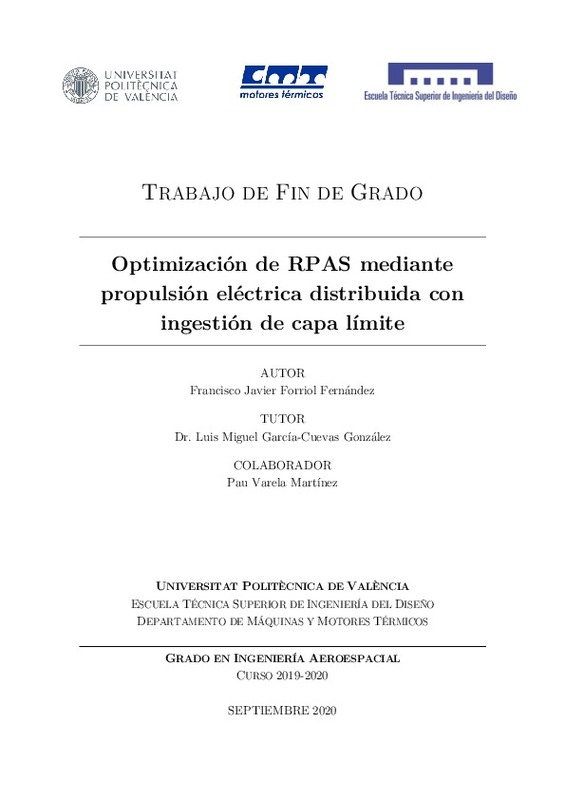JavaScript is disabled for your browser. Some features of this site may not work without it.
Buscar en RiuNet
Listar
Mi cuenta
Estadísticas
Ayuda RiuNet
Admin. UPV
Optimización de RPAS mediante propulsión eléctrica distribuida con ingestión de capa límite
Mostrar el registro completo del ítem
Forriol Fernández, FJ. (2020). Optimización de RPAS mediante propulsión eléctrica distribuida con ingestión de capa límite. Universitat Politècnica de València. http://hdl.handle.net/10251/153497
Por favor, use este identificador para citar o enlazar este ítem: http://hdl.handle.net/10251/153497
Ficheros en el ítem
Metadatos del ítem
| Título: | Optimización de RPAS mediante propulsión eléctrica distribuida con ingestión de capa límite | |||
| Autor: | Forriol Fernández, Francisco Javier | |||
| Director(es): | ||||
| Entidad UPV: |
|
|||
| Fecha acto/lectura: |
|
|||
| Resumen: |
[ES] El auge de las aeronaves no tripuladas o pilotadas a distancia (RPAS), junto con la necesidad de encontrar alternativas a los sistemas de propulsión convencionales, ha motivado un crecimiento en el estudio de nuevas ...[+]
[EN] The boom of the unmanned or remotely piloted aircraft (RPAS), as well as the need of finding alternatives to the conventional propulsive systems, has motivated a growing of the researching of new aero-propulsive ...[+]
|
|||
| Palabras clave: |
|
|||
| Derechos de uso: | Reconocimiento - No comercial - Compartir igual (by-nc-sa) | |||
| Editorial: |
|
|||
| Titulación: |
|
|||
| Tipo: |
|
recommendations
Sorry the service is unavailable at the moment. Please try again later.
Este ítem aparece en la(s) siguiente(s) colección(ones)
-
ETSIADI - Trabajos académicos [9131]
Escuela Técnica Superior de Ingeniería Aeroespacial y Diseño Industrial







